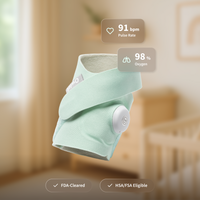If you're pregnant, you've probably started preparing your baby's nursery, picked out baby clothes and cute outfits, and created a registry for your favorite baby items. But have you started thinking about your birth plan? If you don't know where to start or don't know what to include in your birth plan, we're here to help. Keep reading for top tips for creating a birth plan that works for you and your baby. So read on, and get started on planning the perfect delivery!
What is a Birth Plan?
A birth plan is a document that outlines your preferences and wishes for labor, delivery, and postpartum care. It can include things like who you want present during labor, how you'd like to be coached through labor, and what kind of medical interventions you're comfortable with. Essentially, It's a way to communicate your desires and needs to your medical team so that everyone is on the same page during your labor and delivery.
Why Create a Birth Plan?
Creating a birth plan allows you to be an active participant in your own care. It also helps you to advocate for yourself and your baby if there are any unforeseen complications during labor or delivery. Lastly, it provides peace of mind by helping you to feel prepared for what may happen during one of the most important days of your life.
What Should You Include in Your Birth Plan?
There is no right or wrong answer when it comes to what to include in your birth plan. The most important thing is that you communicate your wishes and needs to your medical team. Some things you may want to consider including in your birth plan are:
Before Labor Preferences
- Who you want present during labor (partner, doula, family member, etc.)
- What kind of environment you'd like to labor in (home, hospital, birth center)
- What position you'd like to labor in
- Whether or not you want to use a birthing ball, squat bar, or other tools during labor
- What kind of pain management you're comfortable with (massage, aromatherapy, hydrotherapy, etc.)
- If you have any religious or cultural considerations that need to be taken into account
During Labor Preferences
- How you'd like to be coached through labor (breathing techniques, positions changes, etc.)
- Whether or not you want to be catheterized
- Whether or not you want an IV
- What kind of monitoring you're comfortable with (internal, external, intermittent)
- Whether or not you want an episiotomy
Medical Intervention Preferences
- Whether or not you want to be induced
- Whether or not you want forceps or vacuum extraction
- Specific preferences surrounding a C-section (whether you want to be conscious, whether you want the labor drapes to be drawn back so you can watch, etc.)
After the Birth Preferences
- What kind of cord clamping and cutting you'd like
- Whether or not you'd like your placenta encapsulated
- How soon after birth you'd like to breastfeed
- Who you want to spend time with in the hospital postpartum (partner, doula, family member)
- Who you want to hold the baby first
- Whether you want your baby to sleep in your room or in the hospital nursery
These are just some examples of things that you may want to include in your birth plan. Again, there is no right or wrong answer - it's entirely up to you!
Also, keep in mind that your birth plan is a flexible document. It's meant to be a guideline for you and your medical team, not a rigid set of rules. Be sure to discuss your birth plan with your doctor or midwife ahead of time so that they are aware of your preferences and can help you to make any necessary adjustments.
When Should You Create Your Birth Plan?
The best time to create your birth plan is during your third trimester. This gives you enough time to do your research and make informed decisions about what you do and don't want during labor and delivery. It also allows you to change your mind if something doesn't feel right, or if your circumstances change.
How to Create a Birth Plan
Now that you know what a birth plan is and why you should create one, it's time to get started! Here are some tips for creating a birth plan that works for you:
1. Do Your Research
Before you start writing your birth plan, it's important to do your research. This means reading up on things like the different stages of labor, common interventions, and pain management techniques. That way, you can make informed decisions about what you do and don't want during delivery
2. Talk to Your Doctor or Midwife
Once you've done your research, it's time to talk to your doctor or midwife about your preferences. This is an important step because they will be able to provide you with information and resources that you may not have considered. They can also help you to make any necessary adjustments to your birth plan
3. Write It Down
After you've discussed your preferences with your medical team, it's time to start writing down your birth plan. This doesn't have to be a long or complicated document - just a simple list of the things that are important to you. Be sure to include a space for your doctor or midwife to initial and date each item on the list.
4. Make Copies
Once you've finished writing your birth plan, make sure to make copies for yourself and your medical team. That way, everyone will be on the same page when it comes time to deliver your baby.
5. Be Flexible
Remember that your birth plan is a guideline, not a set of rules. Things may not always go according to plan. As long as you’re aware of that, that's okay. The important thing is that you are comfortable with whatever happens.













